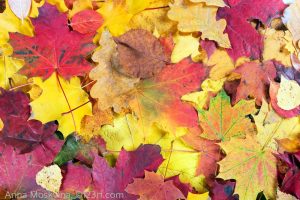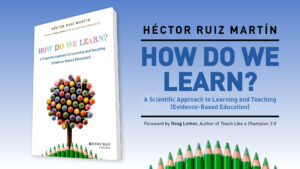
1) MATERIAL
- 2 green leaves from three different trees
- 3 glass jars
- Tin foil paper
- Rubbing alcohol
- Paper towels (e.g., paper coffee filters)
- A bowl
- Hot tap water
- A knife
- A marker
2) LET’S GET THE BALL ROLLING!
- Cut up a tree leaf into tiny pieces and place them inside one of the three glass jars. Do the same with the other two leaves, and then label the jars with the name of the tree that the leaves come from.
- Pour enough alcohol into each jar just to cover the leaves and then crush the pieces into the rubbing alcohol using the blunt end of a knife.
- Use foil paper to cover the opening of the glasses. Pour a little hot water in the bowl and carefully place the jars in the bowl, making sure they do not fall over.
- Let the jars sit for at least 30 minutes, or until the alcohol has darkened (the darker, the better). Lightly shake the jars every five minutes, and change the water if it becomes cool.
- Make three paper towel strips, 15 cm long and 1 cm wide. Mark them in a way that you can distinguish them.
- Remove the jars from the bowl and the foil covering them. Put one strip into a jar until the bottom end just touches the alcohol. Drape the top end of the strip over the jar’s opening, so that the strip hangs vertically. Repeat this with the other two jars.
- The alcohol will travel up the paper strips, dragging the colors along with it. After one hour, or more, bands of different colors will have formed on the strips: a wider green band and some dim yellow, orange, and/or red bands, depending on the type of leaf.
3) WHAT HAPPENED?
 The green band is chlorophyll. The other bands of color on the strips are the other pigments involved in photosynthesis. These pigments were not visible because they were masked by the predominant green chlorophyll. Repeat this experiment, this time using an autumn leaf from the same tree. Also, compare the results with leaves from other trees species. Do the same bands show, and if so, do they come out in the same order?
The green band is chlorophyll. The other bands of color on the strips are the other pigments involved in photosynthesis. These pigments were not visible because they were masked by the predominant green chlorophyll. Repeat this experiment, this time using an autumn leaf from the same tree. Also, compare the results with leaves from other trees species. Do the same bands show, and if so, do they come out in the same order?











We need a lot more insigth like this!